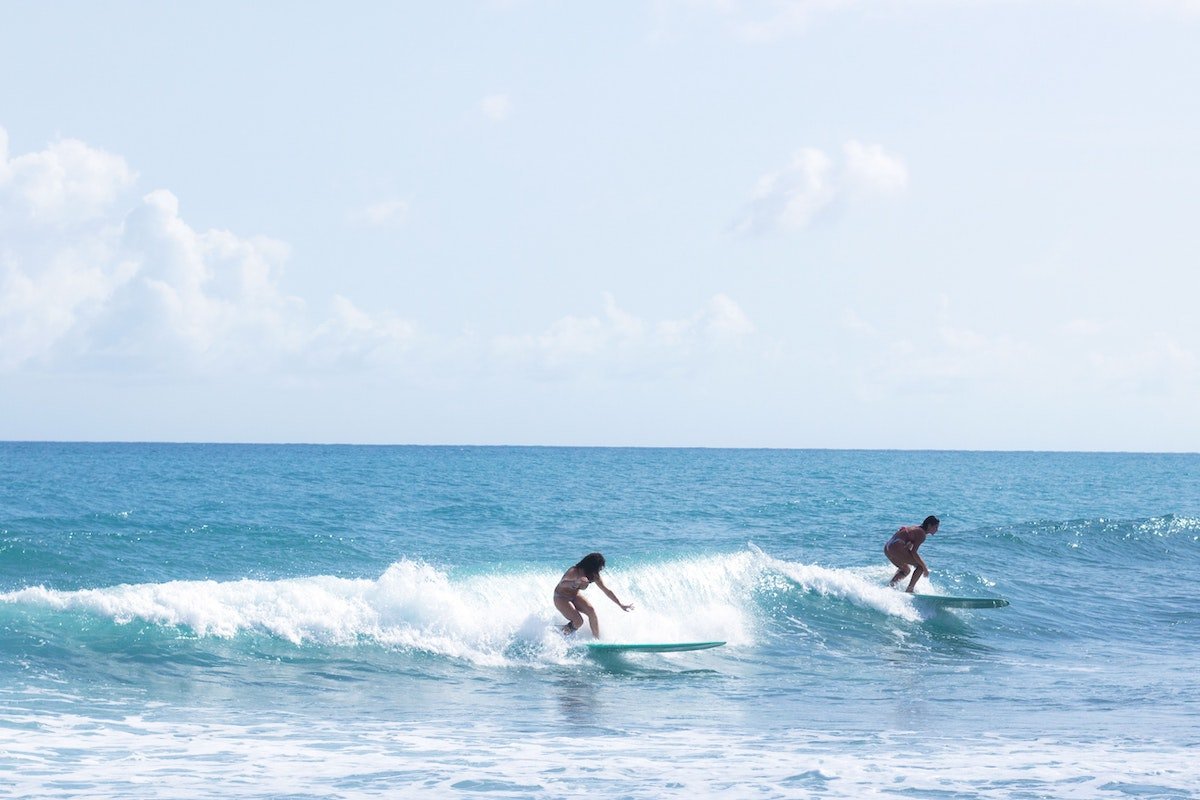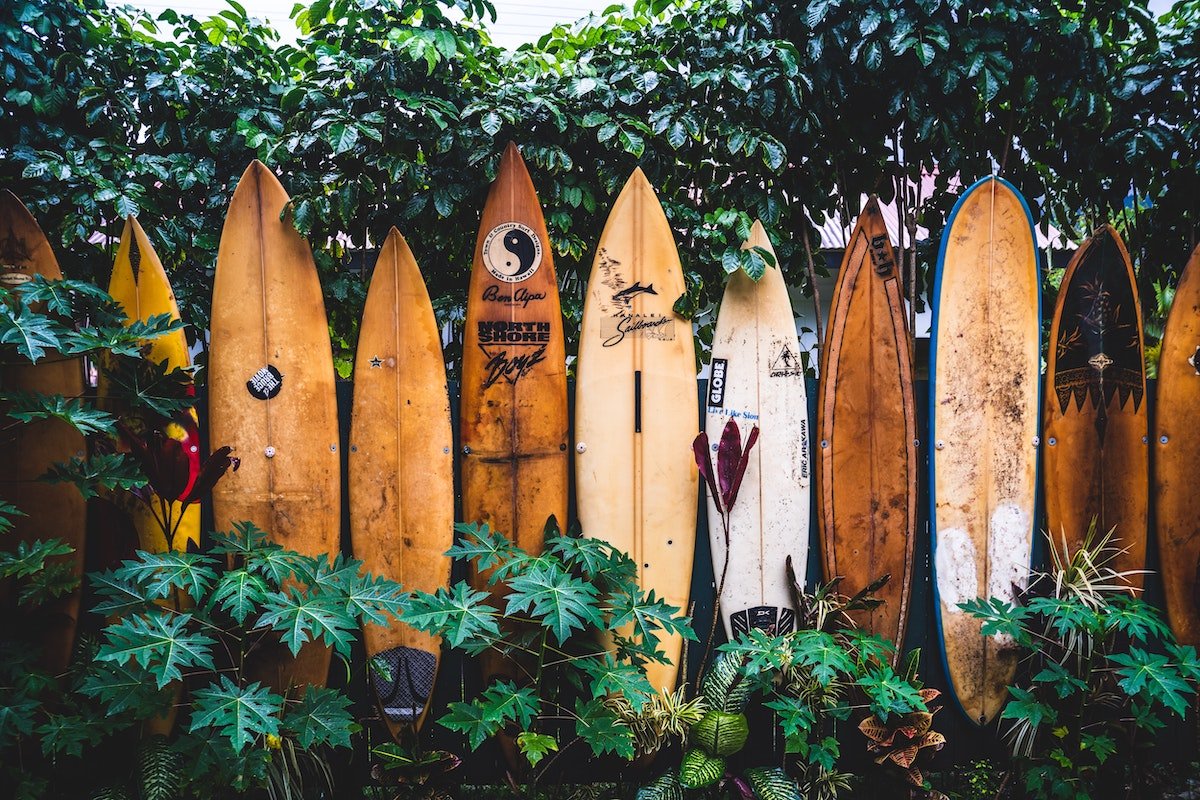Surf etiquette is an important part of being a good surfer. In this guide, your mates here at Southwest Surf House discuss the history of surfing etiquette plus surf etiquette rules you need to know.
Surfing has a rich and diverse culture.
It's filled with big moments, memorable personalities and even its own lingo.
Another important aspect of surfing though is that it comes with a set of rules or basic commandments called surf etiquette.
We'll dig into the origins of surfing etiquette below, but essentially it exists to prevent accidents, misunderstandings and even serious injuries.
What's more, the rules of surf etiquette are applicable to everyone, no matter whether you're a beginner, intermediate or advanced surfer.
Of course, enforcing these rules is another matter.
You won't find surf police patrolling the lineup, nor is there some kind of penalty or fine system.
Surf etiquette, at its core, is really all about respect.
Respecting the people in the water with you, respecting the locals and respecting the environment.
So, with that in mind, let's learn all about surf etiquette history and how the unwritten rules of surfing came to be!
Surfing etiquette history - The code of Kapu
It's difficult to point to a time in history and say with conviction that this is when surf etiquette began.
In saying that though, surf historians (yep... it's a real thing) believe that surfing etiquette has its origins in the ancient Hawaiian code of conduct - otherwise known as kapu or the kapu system.
Kapus were essential laws and regulations that governed the lives of Hawaiians. Kapus were strictly enforced and breaking a kapu led to capital punishment.
Regarding surfing, kapus dictated the way in which Hawaiian society was split between royalty and commoners.
The royals were able to surf the best waves while commoners were instructed to surf elsewhere.
The code of kapu extended to other aspects of Hawaiian surf culture too. For instance, the length of boards and what types of trees could be used in the construction of said boards also fell under the law of kapus.
This, combined with the regulation of modern Hawaiian lineups, could very well be the reason why surf etiquette has become a part of surf culture.
8 Surf etiquette rules to know before you go
1. Respect the locals and the beach
This aspect of surfing etiquette gets a lot of press.
This is mainly because there's a misconception that locals act aggressively or standoffish because they feel like they own the beach.
The reality is that when you grow up or live in one area for your entire life, the experiences you have at a wave run very deep.
As such, anyone leaving trash, committing any of the following surfing no-no’s out of ignorance or blatantly disrespecting other surfers in the lineup is frowned upon.
Then again, there's always going to be that one guy or girl in the lineup (ok, it's pretty much always a dude, but we're trying to be inclusive) who won't give you a break, even if you're on your best behaviour.
If this happens, the problem is with them and not you. But it's best not to kick the hornet's nest so to speak.
As an unwritten rule of thumb, you should always respect the beach and give the locals a wide berth.
This will make your experience surfing a new break infinitely better and it may even lead to you making friends while in the lineup.
2. Observe the right of way
Once again, this may sound strange to the uninitiated, but lineups actually have a rough system that determines who has the right to a wave and who must wait for the next one.
Essentially, the surfer who has been waiting for the longest, is closest to the peak or is simply in a better position to catch a wave has right of way.
In saying that, right of way can be up for interpretation. And usually, this interpreting is done by either the unaware or people who don't care so much for the unwritten laws of surfing.
We prefer to stick to the rules when it comes to the right of way.
Sure, you might not catch all the best waves on that day, but at least you're sharing and not being greedy.
Plus, there's no chance of you dropping in on someone.
This is when you try to catch a wave even though you're not the one closest to the peak.
It's the surfing equivalent of cutting to the front of the line at the bank and it's going to make you very unpopular, very quickly.
The good news is that if you drop in on someone by accident, a sincere apology should smooth things over.
3. Don't snake
Not sure what it means to "snake" someone?
Don't stress.
You're bound to come across this term as you learn the fundamentals of surfing and surf etiquette.
Put simply, snaking is what we call paddling up the inside of a fellow surfer in order to gain the inside position.
Now, while this may not seem so serious on first inspection, remember that the surfer on the inside has the right to the wave.
This means that by snaking another surfer you're essentially jumping the queue.
Experienced surfers snake people. Intermediate surfers do it too. Even beginners have been known to snake surfers in the lineup, although that's mostly an accident.
Just keep in mind that you should paddle wide around a peak.
You should also never sit directly inside the surfer closest to the peak then proceed to call them off the next wave.
This is what we call a big no-no and it's pretty much the number one surfing faux pas.
4. Be careful not to obstruct other surfers
Getting in the way of another surfer is never good.
At best, you mess up their wave. At worst, you both come away with a damaged surfboard or even a serious injury.
Given that you ride waves towards the shore while other people are paddling in the opposite direction to reach the peak though, there's always the potential for a collision.
This possibility is increased the more people there are in the water.
The good news is that there are ways to minimise your risk of obstructing another surfer:
· Always paddle around a peak instead of straight through the middle
· Time your paddle out so that you're not caught by a set
· Never assume that another surfer can see you
· Try to anticipate where another surfer will be on the wave
· Don't pause on the shoulder of a wave
5. Never throw your board with people behind you
Surfboards can be incredibly dangerous if they hit someone.
Shortboards have a sharp nose, longboards are heavy and all types of boards have blade-like fins.
In short, people often come off second best whenever there's a clash of fibreglass and skin.
Foamies (foam surfboards) on the other hand, are super safe in comparison, which is one of the reasons we use them. But no matter what you're riding, you should never throw your board when there's someone near or around you.
Once you go underwater and the wave picks up the board, you have no control over where it goes.
It might injure somebody else or it may hurt you.
Either way, etiquette surfing dictates that you should try to keep your surfboard as close as possible.
However, if you must discard your board to get under a large wave, make sure you're in the clear first.
6. If in doubt, don't paddle out
If you're only new to surfing, it can be hard to figure out whether the conditions are right.
One thing we see a lot is people who think that the waves are perfect, only for them to reach the shoreline and realise that it's way bigger up close.
Naturally, you might think that you still need to paddle out given that you've got your board and walked all the way down the beach. But if your gut is telling you that it's out of your comfort zone, chances are it is.
Want our advice?
Don't paddle out if you have any doubt about your skills at a particular wave.
Instead, you should look for surf spots that are sheltered when the swell is big or only catch waves close to shore.
The last thing you want is to jeopardise your own safety for a few waves.
Also, keep in mind that if you do run into trouble, it will be your fellow surfer who's required to stick their neck out in order to help you.
7. Don't forget to communicate
Communication is key when it comes to surfing.
It doesn't matter whether you're at a new beach or the same beach you've been surfing for decades. Being able to clearly communicate your intentions in a busy lineup is the responsible thing to do.
Of course, we're not suggesting that you should be constantly chatting away.
Communicating during a surf session is more about letting people know in which direction you're riding a wave.
This is because the peak of the wave breaks both left and right. Therefore, if you're going left you should call "left" and vice-versa if you're going right.
Really, it's a matter of giving respect. But it can also be a good way to let people know not to drop in on you.
8. Take turns in the lineup
As you can probably tell, we're big fans of being respectful in the lineup.
Not only do we try to follow these surf etiquette rules as closely as possible, but we're also of the opinion that by being cool in the lineup, other people can catch waves and enjoy themselves too.
Taking turns in the lineup is just another way to give respect.
You won't see us trying to catch every wave that comes our way. You also won't see us paddling to the top of the peak in order to get priority.
As we said, we respect the locals and anyone else in the water.
This allows us to surf for pleasure and actually have fun.
It also means that every other surfer gets their fair share of waves, which always equals more stoke!






